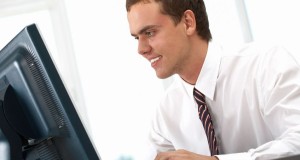The onset of menopause is not something many women look forward to. Menopausal symptoms can last for several years, and may include everything from hot flashes to sleeping difficulties to painful sex. Despite these challenges, it is still possible for menopausal women to participate in regular exercise.
A Weighty Subject
The effects of menopause are often seen (quite literally) on the waistline. Due to its effect on metabolism, this condition typically adds five to seven pounds to a woman’s waistline. Furthermore, carrying extra fat around the stomach increases the risk of several health problems, such as hypertension and heart disease.
It would be a mistake to assume that cardio activities alone will be sufficient to ward off menopausal weight gain. Strength-training exercises are also crucial in maintaining the figure of middle-aged women. Of course, it is always advisable to consult with your doctor before beginning an exercise program.
Reviewing Your Options
When it comes to aerobic exercises, a good place to start is walking. Compared to other exercises, walking places a relatively mild burden on the body. Some other types of calorie shedding, low-impact aerobic activities are shown below:
- Swimming
- Cycling
- Aerobics
- Dancing
- Tennis
By the same token, menopausal women have several options when it comes to preserving muscle mass. Weight machines and dumbbell exercises are the most obvious methods for achieving this goal. In addition, the body’s muscles can be strengthened with yoga, gardening and with the aid of resistance bands.
Bumps in the Road
Unfortunately, many people quickly pick up bad habits after they start to exercise. For example, evidence indicates that failing to warm up prior to exercise could leave the body more susceptible to injury. As a precaution, try to properly warm up before starting an activity. Arm circles and hip rotations can help prepare the body for strength training. Likewise, it is common for older adults to perform both leg lifts and arm swings prior to walking.
Menopausal women may also injure themselves by overburdening their bodies. Such miscues illustrate the need to seek the input of medical professionals when crafting a personal exercise program.
Eating Right
Of course, it’s hard to stay fit on an unhealthy diet, regardless of how much you exercise. Compared to women in their 30s and 40s, women in their 50s generally require about 200 fewer calories on a daily basis. Keeping track of your caloric intake can be a rather difficult task. Should you find yourself in this predicament, you might consider keeping a food diary.
Furthermore, the source of these calories is also important. In lieu of take out offerings and processed foods, try consuming a steady diet of fruits, vegetables, lean proteins and whole grains. Finally, adjusting the portion size and frequency of your meals can pay significant dividends; munching on smaller-sized meals several times daily often boosts the energy reserves of older adults.
 Natural Knowledge 24/7 Educate yourself with nutrition, health and fitness knowledge.
Natural Knowledge 24/7 Educate yourself with nutrition, health and fitness knowledge.






